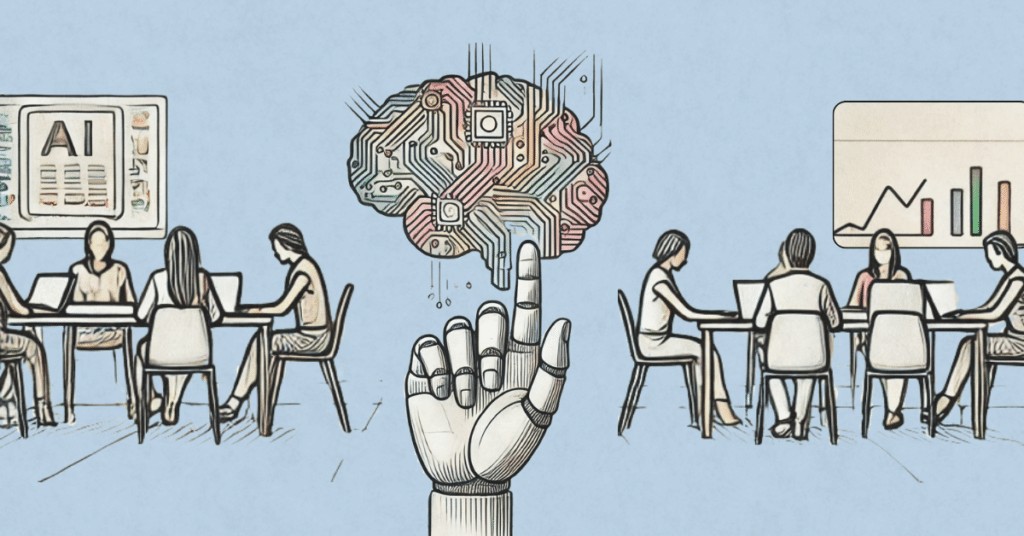Scrum is a proven and effective method for managing complex projects, and has been adopted by organizations across a wide range of industries.
This Scrum Overview will guide you through the principles that form the foundation for Scrum, the 3-5-3-5 of Scrum, and how the roles, artifacts, events, and values work together to deliver transformative value for your organization.

Definition of Scrum
Scrum is an Agile framework for managing projects and product development that is designed to help teams work together to deliver a high-quality product in a collaborative and iterative way. The heart of Scrum is outlined in the Scrum Guide, a document created by the founders of Scrum, Jeff Sutherland and Ken Schwaber. This guide describes the core Scrum framework and the guiding principles of Scrum.
Scrum can be broken down into simple numbers: 3 roles, 5 events, 3 artifacts, and 5 values. A Scrum Team is built by 3 roles: the Product Owner, Scrum Master, and Developer. These roles work through 5 events: Sprint, Planning, Daily Scrum, Sprint Review, and Sprint Retrospective to build 3 artifacts: Product Backlog, Sprint Backlog, and Product Increment. And underpinning everything in Scrum are the 5 core values: Courage, Focus, Commitment, Respect, and Openness. Without these values, you may see some improvement, but companies that adopt Scrum with a focus on these values will see a radical, positive transformation in almost all aspects of their business.
In the following sections, we will explore the 3-5-3-5 in detail. This will give you a comprehensive understanding of the Scrum framework and how to apply it in practice.

Key Concepts and Principles of Scrum
Scrum evolved from Lean Manufacturing and Empiricism. Empiricism is a philosophy that states that we build our knowledge and justification based on what we observe. Lean, or Lean Manufacturing, is a a production method that focuses on reducing waste and delivering value. Together these concepts create the core foundation of Scrum and can be defined by the three pillars of Scrum: Transparency, Inspection, and Adaptation.
TRANSPARENCY
Understanding the true state of an undertaking is vital to success, whether it be planning a trip, building a business, or creating the next killer application. Teams that embrace radical transparency have greater line-of-sight and can make better decisions after they inspect the information that surfaces through Transparency.
INSPECTION
Great transparency will surface data. The team must routinely and purposefully inspect that data to understand the state of the world around them. Inspecting will happen as part of the 5 events and will empower the team to adapt.
ADAPTATION
Once you have gained insight from the information that surfaced, you must adapt to that new information. Scrum is all about the fast pivot and responding to an ever changing world.
Think of it like planning a family vacation. You’ve got everything mapped out, the destination, the route, the activities, and you’re excited to hit the road. But, on the way, you encounter unexpected obstacles, like a giant pothole on the road. A clear windshield allows you to see it, inspect the information, and understand the potential damage if you hit it. Adapting to this obstacle means taking a different route to avoid the damage. If you don’t adapt, you risk getting a flat tire and a ruined vacation for everyone. Just like the pothole, in a project if we don’t adapt to the obstacles, we risk making the project a failure and not reaching the desired outcome. But with Scrum, we can anticipate and adapt to these obstacles in a timely and efficient manner, ensuring the success of the project.

The 3 Roles in Scrum
Scrum Teams are responsible for delivering value to the user community. They are made up of cross-functional, self-managing individuals who handle all aspects of the project, from customer collaboration to development, research, maintenance, and experimentation.
In Scrum, there are only three roles: Product Owner, Scrum Master, and Developer. These roles work together to deliver value on a regular basis. They ensure that the team is able to adapt to the changing needs of the project and deliver a working product to the user community.
PRODUCT OWNER
The Product Owner is responsible for representing the interests of the stakeholders and ensuring that the product being developed meets their needs. The Product Owner prioritizes the list of problems to be solved and connects the humans that have those problems with the humans that can solve those problems (developers).
They are the key decision-maker on the project and are responsible for ensuring that the team is working on the most important items in the backlog; with importance being defined by Business Value or impact to the stakeholder. The Product Owner also works closely with the Scrum Master to ensure that the team is following the Scrum framework and that the team is progressing according to plan.
SCRUM MASTER
A Scrum Master is a leader who serves. They lead and guide the team to focus on becoming a high performing team. Their role is to help everyone in the organization understand Scrum and how to apply it in their domain. They are a facilitator who helps ensure the team is working as a cohesive unit able to consistently achieve their stated outcomes.
A Scrum Master will support the organization and each role on the team. They serve the Scrum team through event facilitation, coaching, impediment removal, and training in the theory and understanding of Scrum. They support the Product Owner in creating a clear Product Goal and visible Product Backlog, understand the state of development, and create a metrics-based approach to Scrum planning. Finally, the Scrum Master supports the organization through leading and educating the organization on Scrum and removing barriers between stakeholders and the team.
DEVELOPER
Developers solve the problems that are prioritized by the Product Owner. They create high-quality Product Increments and support the Product Owner in getting feedback on the product as quickly as possible. It is important to note that a Developer in Scrum is not necessarily a Software Developer. Their skillset will vary drastically depending on the domain. The term Developer here refers to someone that “develops a solution”.
While the specific skills and traits of a Developer will vary, their focus is on delivering a high-quality increment and adapting their plan to meet a Sprint Goal at least once per day.

The 5 Events in Scrum + Refinement
The Scrum team works through 5 events (and an activity) to deliver value in Scrum. Each of the 5 events are intended to impact the 3 Scrum artifacts in a specific way and provide regular opportunities to Inspect and Adapt on the work and output of the team.

The Sprint
The Sprint is a time-boxed period, typically lasting no longer than one month (and ideally much shorter), during which the remaining 4 events of Scrum take place. The fixed length of the Sprint creates a culture of predictability and enables the team to plan and forecast more effectively.
The main focus during a Sprint is to deliver a working product to the user as quickly and frequently as possible. This allows the team to inspect and gain feedback on the use of the product, which in turn enables them to adapt the Product Goal.
Although the Scrum Guide allows for a Sprint of up to one month, it is important to note that the more frequent and shorter the Sprints, the more opportunities the team has to pivot and adapt to a rapidly changing environment. Agile practitioners and Scrum experts work with their teams to shorten the length of sprints as much as possible to maximize the chances of positive outcomes.

Sprint Planning
During Sprint Planning, the team will review the Product Goal and Product Backlog and commit to delivering a subset of the Product Backlog called the Sprint Backlog. You can break the Sprint Planning event into three questions:
1. How much can we do?
2. What are we doing and why is it important?
3. How are we going to get it done?
How much can we do?
In metrics-based Sprint Planning, the team will utilize Yesterday’s Weather (the average amount of work a team gets done in a given Sprint) and their team’s scheduled availability to determine how much they can commit to getting done. Once the team determines the amount of work they can commit to, they will review the Backlog and determine what they will do based on their Product Backlog.
What are we going to do and why is it important?
The team will work together to review the Product Backlog and determine what work they will do in the upcoming Sprint. The team should have a clear understanding of WHY the Product Backlog Item they are committing to is important and how it will create value.
In addition to moving the Product Backlog Items, the team is committing to the Sprint Backlog. They will develop a clear Sprint Goal. The team commits to delivering the Sprint Goal and will make that goal big and visible throughout the remainder of the events.
How are we going to get it done?
Once the team has committed to the work, they will discuss how they will get the work accomplished. Some teams will create tasks that identify the specific work needed to complete the product.
Tasks or PBIs should not be assigned to a person. Scrum works best when team members are empowered to pull work vs. having work pushed to them. It is up to the Scrum Master to support and coach the team in how to ensure the team is owning success and not relying on a single individual or subgroup to carry them through the Sprint.

Daily Scrum
Teams should regularly review the progress towards a Sprint goal and adapt their plan accordingly. The Daily Scrum is a 15-minute or less event in which the team reviews their progress towards a goal and adapts their plan to maximize success. While the agenda and method of performing a Daily Scrum is up to the Developers, it is critical that the team maximize transparency and focus on building a plan for the day and adapting the Sprint plan.
While the Developers are responsible for how the Daily Scrum occurs, the Scrum Master will often facilitate this event to coach a team in ensuring the outcomes are met. Additionally, the Product Owner should be part of the conversation to maximize team cohesion and provide quick decision-making and feedback.

Sprint Review
At the end of the Sprint, the team will present the outcomes of the Sprint to stakeholders and discuss their progress towards the overall goal of the Product.
During this event, the team and stakeholders will:
– review the work that was accomplished during the Sprint
– talk about what impacted the Sprint
– get feedback on the work
– and update the Product Backlog with any insights gained during the event.

Retrospective
The final event of the Sprint focuses on the team and how well it is working. The Retrospective (or Retro) is the single most important event for the Scrum Master and gives the team an opportunity to adapt their process to improve performance in the future.
The team will inspect their product, team metrics, things that went well during the Sprint, things that did not go well, and identify how they will adapt their process in the future. This adaptation will result in a Kaizen, or a backlog item that is focused on team improvement.
This Kaizen is refined and will become the top priority item in the next Sprint.

Refinement
Finally, the team will need to refine their understanding of incoming work to ensure it is ready to be brought into a Sprint. While not an event in Sprint (the Scrum Guide only states that the team will refine the work as often as is needed), it is a critical activity that high-performing teams do to maximize their chances of success.
Refinement is not an event as it doesn’t happen at the “same time, same place” each Sprint and will often have a radically different agenda depending on what is being refined and the desired outcomes. The Product Owner will facilitate this event and will ensure the right people are in the room (including external stakeholders, customers, users, Developers, other teams, etc.).
While this isn’t an official event, teams that fail to maintain a healthy and well-refined Ready Backlog will often struggle to complete work during a Sprint.
During Refinement, the team engages in a collaborative process to better understand and prepare Backlog Items for upcoming work. This may involve meeting with stakeholders to develop acceptance criteria, estimating effort using Agile estimation techniques, or setting long-term goals. The team may also engage in other activities as needed to increase their understanding of the Backlog Item and to ensure it is ready for development.

The 3 Artifacts in Scrum
The Scrum Team will work through the 5 events to deliver 3 artifacts: the Product Backlog, Sprint Backlog, and Product Increment (or increment). Each increment represents a commitment the team is making to deliver value in very specific ways. Let’s look at those artifacts.
PRODUCT BACKLOG
The Product Backlog is a list of the problems a team is going to solve as part of their Sprint. It is constantly evolving with feedback through the Inspect and Adapt cycle and consists of a prioritized list of Product Backlog Items (PBIs).
The team will work together to refine PBIs until they are small enough and ready to be brought into Sprint for work.
Commitment: Product Goal
The team, with the support of the Product Owner, will maintain a clear Product Goal. This goal defines how the world will be better as a result of the work in the backlog. This goal is a long-term objective for the Scrum Team and reflects the work that must be completed before they move to another body of work.
SPRINT BACKLOG
At the end of Sprint Planning, the team will have moved items from the Product Backlog to the Sprint Backlog. The Sprint Backlog reflects the team’s commitment to deliver value each and every Sprint. The team will keep their Sprint Backlog visible to the entire organization and they should reflect on and update the backlog as part of their Daily Scrum.
Commitment: Sprint Goal
According to the Scrum Guide, the Sprint Goal is the “single objective for the Sprint.” It is your team’s rallying cry and focus of all the work happening during a Sprint. The goal can be viewed as a summary of the work the team has committed to, and provides a clear point of reference the team will refer to consistently throughout the Sprint. As things change throughout the Sprint, if the team sees a need to update their Sprint Backlog or Goal, they will work with the Product Owner to reflect those changes as quickly as possible.
PRODUCT INCREMENT
At the end of each Sprint, the team will deliver an increment, or increments. The increment is a clear step towards the Product Goal and allows the team to provide incremental value and get feedback from real users. Each increment will be presented during the Sprint Review for feedback, but this feedback is not a stage-gate for release. Teams should release as frequently as possible using tools and concepts such as DevOps to reduce the friction for a release.
Commitment: Definition of Done
The Definition of Done is a clear and well-understood list of what “Done” means for a team and organization. According to the Scrum Guide, “the moment a PBI meets the Definition of Done, an Increment is born”.
Having a shared understanding of Done promotes transparency and confidence in the work that is being completed and released. As such, it is important that a Definition of Done is shared throughout an organization.

The 5 Scrum Values
The Scrum Values are an essential aspect of the Scrum framework. These values provide a guiding principle for teams on how to work together effectively and efficiently in order to deliver high-quality products. The five Scrum Values – Courage, Focus, Commitment, Respect, and Openness – are interconnected and mutually reinforcing. They are designed to foster a culture of transparency, inspection, and adaptation, which are essential for the success of any project or product development.
When teams embrace these values, they create an environment where individuals feel comfortable taking risks, making mistakes, and learning from them. The values also foster mutual trust and understanding within teams, which is critical for creating a culture of psychological safety. By embracing the Scrum Values, teams can work together more effectively and efficiently, delivering high-quality products to the end-user, and achieving their commitments to solving customer problems.
OPENNESS
Openness, is deeply rooted in the philosophy of empiricism. Empirical processes require transparency in order to inspect, adapt, and improve. Open teams in Scrum agree to be transparent about all aspects of their work, including any obstacles or challenges that may be preventing them from achieving their goals. This spirit of openness is a cornerstone of Scrum and transforms the way organizations approach their work by making all results and all work visible to the team and stakeholders. This allows for open and honest feedback, which in turn propels the organization forward.
Openness encourages a culture of transparency, inspection, and adaptation, which are essential for the success of any project or product development. By embracing the value of openness, teams can work together more effectively and efficiently, delivering high-quality products to the end-user.
COURAGE
One of the key values of Scrum is courage, which is the ability to be open to change and willing to try new things to solve complex problems. It takes courage to tackle difficult challenges and make tough decisions. Courage is essential for embracing openness and improvement, as it allows individuals and teams to be vulnerable and take risks. Organizations that strive for excellence must foster a culture of psychological safety based on courage and vulnerability. This means that leaders must be willing to model courage and be vulnerable themselves in order to create an environment where their teams feel comfortable taking risks and pushing themselves to improve.
Without courage, teams will be hindered in their ability to tackle challenging issues and improve their work. By embracing the value of courage, teams can work more effectively and efficiently, delivering high-quality products to the end-user.
RESPECT
Respect is essential for creating a culture of mutual trust and understanding within teams and organizations. Respect is a two-way street, leaders must have respect for their teams and their capabilities to solve problems, and teams must have respect for their leaders, understanding that they are human and may sometimes fail. Team members must also have respect for each other, regardless of their backgrounds.
The best teams and organizations are built on respect and appreciation for one another. This mutual respect and acceptance foster a sense of psychological safety, which is critical for building influential and healthy organizations. By embracing the value of respect, teams can work together more effectively, making better decisions, and delivering high-quality products to the end-user. In Scrum, respect is not just a nice to have, it is a must-have.
COMMITMENT
Commitment is part of a firm foundation for high-performing teams and organizations. Commitment is based on the willingness of individuals to work together as a team and to strive towards the shared goals of that team. It requires buy-in and investment from each team member in the direction of the organization. This level of commitment allows organizations to work at the team level rather than micromanaging individuals and fosters a culture of respect, openness, and courage.
When individuals are fully committed to the team and its objectives, they are more likely to collaborate effectively. This effective collaboration allows them to make decisions that align with the team’s goals. In Scrum, commitment is not just a nice to have, it is a must-have. By embracing the value of commitment, teams can work together more effectively and efficiently, delivering high-quality products to the end-user.
FOCUS
Focus is the ability to direct a team’s efforts towards the most important tasks at hand. It is a powerful tool that allows teams to achieve their commitments and deliver value to customers by solving their problems effectively.
In Scrum, we achieve focus by maintaining a clear and prioritized backlog of work, which helps the team to identify and work on the most important tasks. This allows teams to work more efficiently and effectively, delivering high-quality products to the end-user.
By embracing the value of focus, teams can work together more effectively and efficiently, delivering high-quality products to the end-user, and achieving their commitments to solving customer problems.

“Scrum is easy to learn and difficult to master.” Learning to apply it properly is a journey of a thousand steps, and we’ve barely scratched the surface. Here are some other resources you can use on your Scrum journey:








